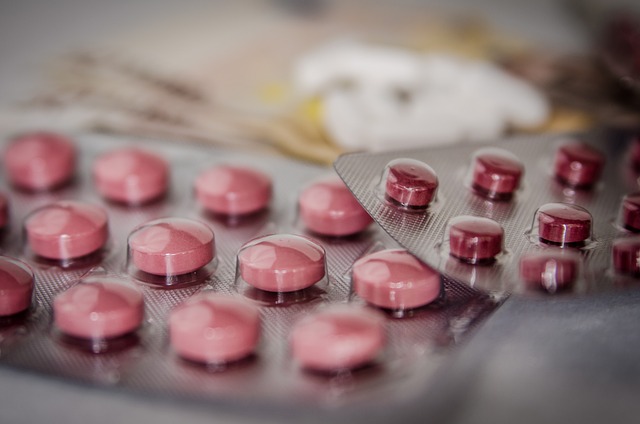GLP-1 receptor agonists (GLP-1 drugs) are cutting-edge medications that mimic gut hormone GLP-1, offering dual benefits in diabetes management: stimulating insulin and suppressing glucagon. They come in injectable and oral formulations, with examples like exenatide, liraglutide, semaglutide, and dulaglitide. Dosing decisions involve considering age, BMI, kidney function, and blood glucose levels. While convenient, oral GLP-1 drugs may face digestive enzyme breakdown. Future developments aim to enhance delivery methods, reduce injection frequency, and improve patient convenience through long-acting formulations, novel routes (oral/transdermal), and targeted drug delivery technologies.
GLP-1 receptor agonists have emerged as a powerful tool in diabetes management, offering significant benefits for patients. This comprehensive guide delves into the dosing and administration of GLP-1 drugs, exploring their mechanism of action and role in blood glucose control. We cover various aspects, from the different types of GLP-1 drugs available to factors influencing dosage, administration routes, and strategies for optimizing therapy. Additionally, we discuss common side effects and emphasize an individualized approach to personalizing GLP-1 receptor agonist treatment.
Understanding GLP-1 Receptor Agonists: Their Role in Diabetes Management

GLP-1 receptor agonists are a class of medications designed to mimic the effects of the gut hormone glucagon-like peptide-1 (GLP-1). These drugs play a significant role in diabetes management, particularly for individuals with type 2 diabetes. By activating GLP-1 receptors, they stimulate insulin secretion and suppress glucagon release, leading to improved blood sugar control. This dual action helps lower blood glucose levels while reducing the risk of hypoglycemia, a common concern with other diabetes treatments.
GLP-1 drugs have gained prominence in recent years due to their unique benefits. They not only assist in glycemic control but also promote weight loss, reduce appetite, and decrease food intake—making them versatile tools for comprehensive diabetes management. Furthermore, these medications offer potential advantages over traditional insulin therapy, such as once-daily administration, reduced risk of hypoglycemia, and improved patient convenience.
Types of GLP-1 Drugs: A Comprehensive Overview

GLP-1 receptor agonists, or GLP-1 drugs, are a class of medications designed to mimic the effects of the natural hormone GLP-1 (glucagon-like peptide-1). These drugs play a significant role in the management of type 2 diabetes and have gained prominence in recent years due to their unique mechanisms and benefits. The market offers several types of GLP-1 drugs, each with distinct characteristics and approval for specific uses.
The variety includes both injectable and oral formulations. Injectables, such as exenatide and liraglutide, are administered once or twice daily and have demonstrated superior glucose-lowering effects compared to some other diabetes medications. Oral GLP-1 drugs, like semaglutide and dulaglitide, provide a convenient alternative, offering potential advantages in weight management along with glycemic control for people with type 2 diabetes.
Dosing Considerations: Factors Influencing GLP-1 Drug Dosage

When considering the dosing of GLP-1 receptor agonists, several factors come into play. These medications are primarily used for the management of type 2 diabetes and weight management, with the dosage tailored to individual patient needs. Key influences on GLP-1 drug dosage include age, body mass index (BMI), kidney function, and ongoing blood glucose levels. Patients with higher BMI or more significant hyperglycemia may require higher initial doses, while those with reduced kidney function often necessitate lower doses due to potential drug clearance implications.
Additionally, the specific type of GLP-1 agonist can impact dosing requirements. Some GLP-1 drugs are administered once daily, offering convenience, whereas others are given multiple times a day or at mealtimes. The pharmacokinetic properties and duration of action of each medication also vary, influencing how frequently doses need to be adjusted. Regular monitoring of blood glucose levels is essential in optimizing the dosage for each patient, ensuring both glycemic control and minimizing potential adverse effects associated with GLP-1 receptor agonist therapy.
Administration Routes: Oral, Injectable, and Beyond

GLP-1 receptor agonists, a class of drugs designed to mimic the effects of the natural hormone GLP-1, are primarily administered through two main routes: oral and injectable. While the oral route offers convenience, many GLP-1 drugs are not suitable for oral administration due to their breakdown by digestive enzymes. This has led to the development of injectable forms, providing a more direct way to deliver the medication.
Beyond traditional oral and injectable methods, researchers are exploring alternative administration routes to enhance patient compliance and comfort. Transdermal patches, for instance, have shown potential for delivering GLP-1 drugs steadily over time, offering a convenient stick-on option. Additionally, inhaling GLP-1 drugs as aerosolized particles is another innovative approach under investigation, aiming to replicate the benefits of these treatments with potentially fewer injection sites.
Optimizing GLP-1 Therapy: Frequency and Duration of Doses

Optimizing GLP-1 therapy involves carefully considering the frequency and duration of doses. GLP-1 drugs are typically administered once or twice daily, with the exact schedule depending on the specific medication. For instance, some GLP-1 receptor agonists are designed for once-daily dosing, offering convenience to patients. However, others require twice-daily administration for optimal efficacy. The duration of therapy also varies; these medications can be prescribed long-term to help manage chronic conditions like type 2 diabetes.
Dose optimization is crucial for achieving the desired therapeutic effects while minimizing adverse reactions. Healthcare providers should monitor patients closely, assessing blood sugar levels and evaluating any side effects reported. Adjustments in dosage may be necessary based on individual responses, ensuring that GLP-1 therapy is tailored to each patient’s unique needs.
Common Side Effects and Management Strategies for GLP-1 Drugs

GLP-1 receptor agonists, while generally well-tolerated, can cause several side effects. The most common include nausea, vomiting, and diarrhea, which are often dose-related and may subside as your body adjusts to the medication. These gastrointestinal symptoms can be managed with dietary adjustments, such as eating smaller meals more frequently and limiting high-fiber foods. Additionally, staying hydrated is crucial to alleviate constipation, another potential side effect.
Some patients may experience hypoglycemia, especially if they take GLP-1 drugs in combination with other diabetes medications. Regular monitoring of blood sugar levels is essential for those at risk. Other less common but serious side effects include pancreatitis and renal issues. Prompt medical attention is advised if you develop severe abdominal pain, back pain, or signs of kidney problems. Effective management often involves close monitoring by healthcare professionals and making necessary adjustments to the treatment plan.
Individualized Approach: Personalizing GLP-1 Receptor Agonist Therapy

In the realm of GLP-1 receptor agonist therapy, a truly effective treatment strategy demands an individualized approach. Since GLP-1 drugs mimic natural hormones and stimulate insulin production in a glucose-dependent manner, their dosing should be tailored to each patient’s unique needs. Factors like body weight, blood glucose levels, and personal medication preferences play a significant role in determining the optimal dosage. This personalized touch ensures that patients receive the most suitable therapy, enhancing both its efficacy and patient satisfaction.
Furthermore, regular monitoring of HbA1c levels and patient education are key components in managing GLP-1 agonist treatment. Such an approach allows healthcare providers to make informed adjustments to dosing regimens, ensuring that each patient achieves their glycemic targets while minimizing potential side effects.
Future Prospects and Research in GLP-1 Drug Administration

The future of GLP-1 drug administration looks promising, with ongoing research focusing on improving delivery methods and enhancing patient convenience. One area of interest is the development of long-acting formulations that can provide sustained effects over an extended period, potentially reducing the frequency of injections. Researchers are also exploring novel routes of administration, such as oral or transdermal, to overcome the current limitations of subcutaneous injections. These alternative methods could significantly improve patient adherence and quality of life.
Additionally, advancements in drug delivery technologies, like microencapsulation and lipid nanoparticles, show potential for targeted and controlled release of GLP-1 drugs. Such innovations might enable more precise dosing and reduce side effects. Furthermore, personalized medicine approaches tailored to individual patient needs and pharmacogenomic studies to optimize GLP-1 receptor agonist efficacy are areas of active research. These future prospects hold the key to making GLP-1 drugs even more accessible, effective, and user-friendly for the management of metabolic disorders.
